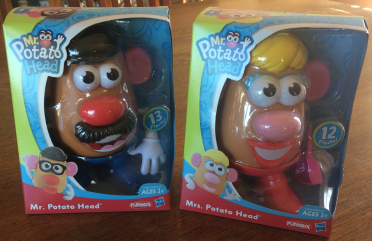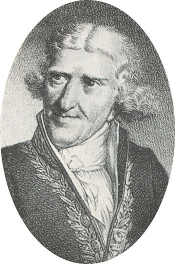Fine Food from Fulcrum Farm: Spuds
- The Beagle
- Apr 3, 2018
- 8 min read
I ambled over to Kyle’s property a few days ago to see what he was harvesting this month. Spuds, or Murphies, Taters, … there are many nicknames for potatoes. A few hundred years ago the Western world was unaware of the humble potato. But today it is a dietary staple. Hasbro’s Playskool brand markets a toy called Mr Potato Head. Hasbro is keen not to be seen as failing in its diversity policy and so there is also a toy called Mrs Potato Head. Hasbro’s website tells me that I can “mix up the fun with Mr and Mrs. Potato Head toys!” Now, I could be churlish and complain that, on the website, the “Mr” is not followed by a full stop whereas the “Mrs.” is so ornamented. After all, the full stops are there on the product packaging. I could also complain that the modern female potato might not wish her marital status to be communicated through her title. She should perhaps be Ms Potato Head. These are minor points for Hasbro is guilty of a far greater wrong-doing.

Potatoes from Kyle: these are Sebagos
As it happens I have a Mr Potato Head and a Mrs Potato Head. These two toys are still in their boxes and there is a picture of them here. You will see that while Mr Potato Head has 13 pieces, Mrs Potato Head has only 12. I made a comment about this on the Playskool FaceBook page, but they did not favour me with a response. Why, I asked, was there a difference? Why does Mrs Potato Head have less pieces than Mrs Potato Head? A number of enterprising colleagues have ventured to suggest what Mr Potato Head’s extra piece might be, but I will not insult the readers of this column by revealing their suggestions here. I am sure that they are wrong.

Why is Mrs potato Head missing a piece?
Of course, none of this had any influence on Kyle’s decision to grow potatoes. The potato is an important revenue stream for Fulcrum Farm. Customers demand potatoes and potatoes they shall have. The potato is a relative of tobacco and of the tomato. It grew originally in Central and South America, from the southern United States to the south of Chile. It was cultivated as a staple long ago as 8,000BC by the Inca Indians in Peru. It’s difficult to be precise about how long the potato has been cultivated because the tubers do not preserve very well. The earliest archaeologically verified potato tuber remains were found at the coastal site of Ancón in Peru; they date from 2500 BC. The potato grows where corn cannot grow in mountainous areas, up to 15,000 feet. The Incas knew that potatoes exposed to the cold night air turned into chuño. Chuño can be stored for years in frozen underground storehouses with no loss of nutritional value. The name “potato” comes from a Caribbean Indian word for a sweet potato, batata. In October 1995, the potato became the first vegetable to be grown in space. The idea behind this was a goal of feeding astronauts on long space voyages, and eventually, feeding future space colonies. In 1536 Spanish Conquistadors conquered (or more properly laid waste to) what is now southern Peru and north-western Bolivia. There they discovered the flavours of the potato and carried it to Europe. The families of Basque sailors had begun to cultivate potatoes along the Biscay coast of northern Spain by the end of the 16th century. Sir Walter Raleigh introduced potatoes to Ireland in 1589 on some land near Cork. Within fifty years the potato had spread to the rest of Europe. Its success was because it is easy to grow and very hardy. This means that it is inexpensive, and the poor were its principal consumers. The French would not countenance the potato until the late 18th century for they thought it caused leprosy. It was a pharmacist called A A Parmentier who persuaded the French of the error of their ways. Parmentier had been a prisoner of the Prussians during the Seven Years’ War. He eventually persuaded Louis XVI to wear a potato flower and to serve the tuber at court. The rest, as they say, is history.

Above: Antoine-Augustin Parmentier: where would the French have been without him? You will not be surprised to learn that there is an International Potato Center (sic) and you will be even less surprised to learn that the CIP (it is known by its Spanish initials) is based in Lima, the capital of Peru. Its website is advertising, as I write, the 10th World Potato Congress which will be held between 27 and 31 May 2018 in Cusco, Peru. Cusco is a city of about half million people and was the capital of the Inca Empire from the 13th century until the Spanish conquest. If you are planning to attend the World Potato Congress, then you will need to acclimate as Cusco is at about 3,500 metres above sea level. The latest Annual Report of the CIP is entitled “Nutrition in a Climate Changing World”. It tells me that: - There are about 5,000 different varieties of potato, most of which are found only in the Andes - Potatoes are grown in about 130 countries; the potato is the third most important food crop after rice and wheat - Potatoes grow in almost any climate, from sea level to 4,700 meters above sea level CIP includes the sweet potato in its scope of research that contributes to “food security, well-being, and gender equity for poor people in root and tuber farming systems in the developing world.” The sweet potato is only distantly related to the potato although both belong to the same taxonomic order, the Solanales.

The flag of Cusco is a rainbow flag; the order of the colours is red, orange, yellow, green, sky blue, blue and violet. In spite of the fact that they are the third most important crop in the world, potatoes have often been seen as bad boys in a dietary sense. My mother was OK with me leaving my potatoes, but I always had to eat my meat. Many attempts to lose weight have been underpinned by leaving potatoes behind. But many people eat potatoes as French fries or potato chips; even baked potatoes are typically loaded down with fats such as butter, sour cream, melted cheese and bacon bits. I must confess to being one of these “many people”. But potatoes do have a lot of good stuff in them; they are a source of vitamin B6, potassium, copper, vitamin C, manganese, phosphorus, niacin … the list appears to go on. Vitamin B6 is related to brain activity and cardiovascular health One source I consulted about the health benefits of potatoes listed as its number one benefit that potatoes can help you gain weight. This, of course, is fine if that is what you want to do. This is because potatoes consist primarily of carbohydrates and contain very low amounts of protein. The trick, as it is with most things in life, is to find the right balance. It may well be the case that 100 grams of potato contains but 77 calories but this does not mean that they can be eaten with gay abandon. The Australian government advice (eatforhealth.gov.au) includes potato, cassava, sweet potato and taro in its vegetables, legumes and beans group. It is interesting that the UK’s Eatwell Guidelines suggest that 37% by weight of food should include “potatoes, bread, rice, pasta and other starchy carbohydrates.” The guidelines also say that 39% should be “fruit and vegetables”. We can infer from this that the British do not regard the potato as a vegetable.

Above:Potato skins: good for you … or not? The skins of potatoes are also good for you. Half of a potato’s fibre is in the skin. Fiber helps prevent constipation and may reduce the risk of colon cancer. It also I learn helps you maintain a healthy weight because eating foods with fibre helps prevent blood sugar slumps that can cause hunger and lead to mindless snacking. On the other hand, a 1987 article in the Los Angeles Times apparently claimed that “potato skins contain natural chemicals toxic to humans.” Personally, I always eat the skins.They are, however, easy to grow. Find some seed potatoes from a reputable supplier; seed potatoes are small potatoes (usually fairly dried up and wrinkled) which are free of viruses and other diseases. Dig a trench for them about 30 - 40cm wide and 10 - 20cm deep. Space the seed potatoes about 30 - 40 cm apart: you can harvest in about 15 – 20 weeks. Potatoes prefer cool mild conditions with daytime temperatures between 15 – 20° C. They grow best in cooler areas, planted in spring and late summer/early autumn. As the potato shoots begin to grow above the soil surface, gradually cover them with soil. This will form the trademark hills and encourages the plants to form better roots. They will probably need watering but over-watering can lead to the tigers rotting; so, take it easy. One of the challenges that we enjoy in our kitchen is to produce a meal with several courses where every course is built around a particular vegetable. On the face of it this is harder for potatoes; we had not come across a dessert made with potatoes. While this may be a challenge it is also an opportunity and the recipe below is the result of our research. The resulting product is a substantial but very flavoursome cake; you can make it (as we did) as a vegan cake or as a conventional (if that is the right word) cake. I have given ingredients for each.

Potato cardamom espresso cake Topping 1/3 cup brown sugar 3 tablespoons chopped pecans 2 tablespoons each of dried cherries, blueberries & diced apricots ¼ teaspoon ground cardamom Mix these ingredients together, leave aside, to sprinkle on cake before baking Cake 150 gm butter (conventional) or coconut oil (vegan) 2 eggs (conventional) or 2 tablespoons ground chia seeds mixed with 6 tablespoons water and refrigerated for 15 minutes (vegan) [For the chia seeds mix water with chia seeds 3 tablespoons at a time whisking well to avoid lumps] 1½ cups brown/ Rapadura sugar ½ cup milk (conventional) or Cashew/almond milk (vegan) ¼ cup espresso coffee cold press [You can use strong instant coffee instead] 1 teaspoon vanilla ½ teaspoon ground cardamom 1 teaspoon cinnamon 2 cups plain flour 2 teaspoon baking powder 1 teaspoon baking soda 1 pinch salt 2 cups mashed potatoes Method Heat the oven to 175°C 1. Grease and flour 25cm ring tin 2. Mix together the flour, baking powder, baking soda, salt, cardamom and cinnamon 3. In a separate bowl mix together the milk (dairy or other as required), vanilla and coffee 4. Cream together sugar and butter (conventional) or coconut oil (vegan) until fluffy 5. Beat the eggs one at a time or chia mix 1⁄2 at a time into the sugar and add to the mixture in step (4) 6. Then add milk mixture from step (3) to form a batter 7. Add 1/3 of the flour mix (from step (2)), then add 1⁄2 mashed potato, then another 1/3 of the flour mix, the remaining mashed potato and then the remaining flour mixture. Mix all this together until smooth and well combined 8. Pour 2/3 of the mix into the prepared tin 9. Evenly sprinkle fruit topping over batter 10. Pour remaining batter into tin and smooth top 11. Cook for about 55 – 65 mins until a skewer comes out clean This is not a cake that rises like your mother’s Victoria Sponge; it will be moist and firm. It freezes well and tastes good warm or cold. It’s worth the effort and unusual enough to impress people.




